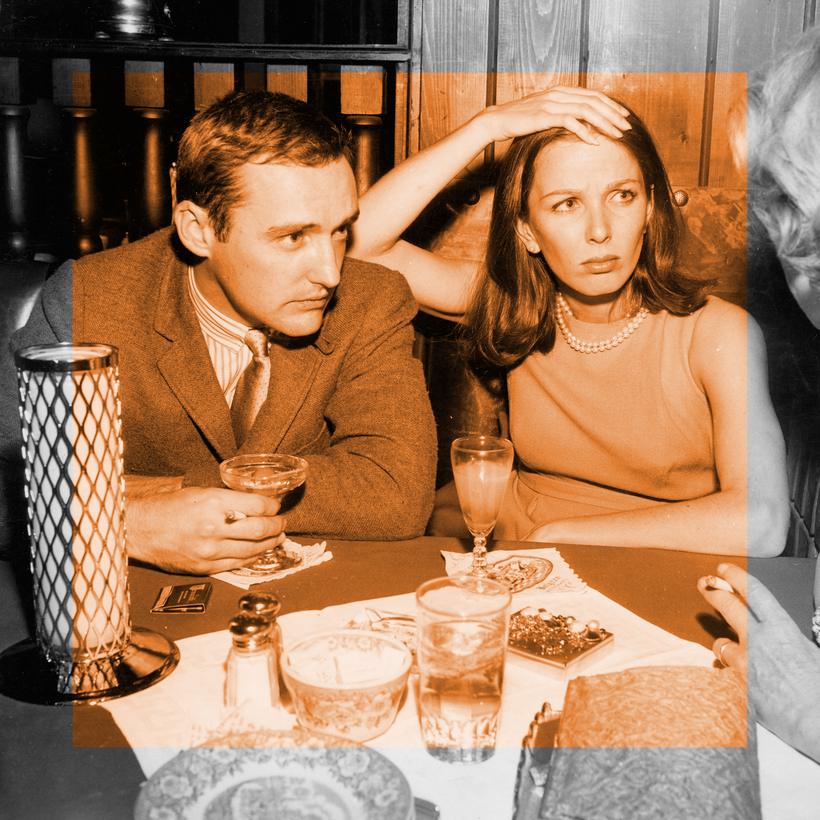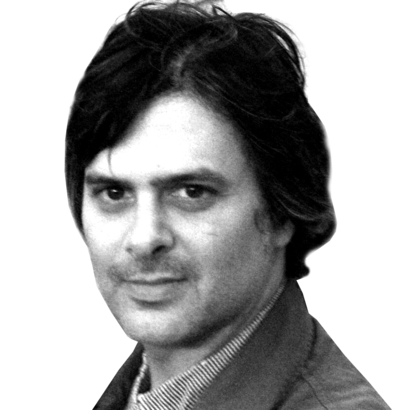“Marriages are complex and mysterious stories,” the critic and poet Robert Pinsky once wrote. I found this to be the case when I was working on Everybody Thought We Were Crazy, my book about Dennis Hopper and Brooke Hayward, the highly collaborative—and highly combustible—couple at the center of the cultural explosion that was 1960s Los Angeles.
Adding to the complexity and mystery, Hopper and Hayward reside on opposite sides of the divide between history and memory, which can feel both razor-thin and, at times, like an unspannable gulf.

Biographies tend to be either about the dead, who inhabit the eternities of history, or about the living, who dwell in active memory (or, in the case of Hayward, not far outside of New York City). Most writers are partial to one over the other. As with many things that demand solid commitment, I tend to waffle: I prefer both. At least that’s how it turned out this time.
Hopper died of cancer in 2010; he had just turned 74. His story—much mythologized, widely misconstrued, and often reduced to a vacuous “Dennis was crazy, man”—would need to be excavated in third-party interviews with friends and family. It would also require trawling several archives, including the Smithsonian, the Jean Stein Papers at the New York Public Library, and his own, the Hopper Art Trust, whose holdings I was given free rein to scrutinize as the first writer permitted to do so.
Placing my fingers on Hopper’s debut kindergarten art project—a tree with an eye-searing green canopy, violently rendered in crayon on manila paper in the early 1940s—provided a dizzy feeling of time collapsing, a sensation familiar to all researchers. There were also never-before-seen letters, mash notes, film treatments, family photo albums, and, perhaps most fun, the classic “baby book” that Hopper’s mother filled with heights and weights, silly sayings, and report cards, the type of scrupulous record that peters out after the third grade.

And then there were Hopper’s own photographs, about 18,000 images on contact sheets contained in binders taking up space on modular shelves and hard drives. These pictures were taken with the Nikon F camera that Hayward gave him on his 25th birthday. They cover a span of time from the spring of 1961, when Hayward and Hopper met on Broadway as the co-stars of a lurid antebellum drama called Mandingo, until around the time Hopper embarked upon Easy Rider, in early 1968, which also happened to be when their turbulent relationship imploded.
Taken in bulk, Hopper’s photographs add up to an invaluable document of the 1960s, as he turned his lens on Andy Warhol, Claes Oldenburg, Martin Luther King Jr., the Byrds, Tina Turner, Jasper Johns, Phil Spector, Terry Southern, the Fondas, Paul Newman, Brian Jones, and so on. It was all there: the art happenings, the civil-rights marches, the Sunset Strip riots, the rock shows, the spark of the New Hollywood.
There were also the many intimate photographs in which Hopper captured forever the romance that he and Hayward shared, and the family life they created, at their house, 1712 North Crescent Heights, in the Hollywood Hills—the so-called “Prado of Pop,” whose walls they lined with landmark works by Lichtenstein, Stella, Ruscha, Rauschenberg, Warhol, and more.

Biographical subjects sometimes leave a cache of diaries or correspondence in their wake. Hopper and Hayward were not so obliging; nothing of the kind exists. But Hopper’s photographs provided real-time, black-and-white documentation of their life together—ecstatic odysseys in the art world, casual moments at home, weekend trips to Jane Fonda’s place in Malibu.
My job was to translate this overstuffed visual record into a cogent written narrative about a couple I came to view as the most emblematic of 1960s Los Angeles—and about the most creative decade in Hopper’s life, a time in which he floundered as a Hollywood actor but, with Hayward as his partner, thrived in the art world as a photographer and a patron.

Hayward, who is turning 85 this summer, is sharp as a tack. During the course of my research, we often met near her house, in rural Connecticut, a place as quiet and remote as 1712 North Crescent Heights was clamorous and central, and headed to a nearby circa-1850 tavern.
Dennis Hopper turned his lens on Andy Warhol, Claes Oldenburg, Martin Luther King Jr., Tina Turner, Jasper Johns, and the Fondas.
Invariably, we ordered B.L.T.’s and iced tea. As Hayward spoke, we would travel back to the time she called “the most wonderful and awful of my life”—a time of exploration and fun, of love and collaboration, of trauma and heartbreak.
We would leaf through her ex-husband’s photography books as she spun out impromptu captions or went off on anecdotal tangents (some of them about Oldenburg, whose Giant BLT resides in the Whitney). Sometimes Hayward would clam up, perhaps drawing a blank, or not wanting to spill the beans, or just floating off on the distracted current of her own recollections. The living can be as sphinx-like as the nonliving. Nobody said memory was any less tricky than history. Complexity and mystery.

But hearing her made everything more real. When I returned home to transcribe those B.L.T.-driven interviews, the clank of 21st-century silverware and requests for mayo fused together with events from 50-something years ago. As I listened, I could visualize Hayward in that tavern, hear her voice bouncing off the raftered ceiling. She was again sitting in front of me, a real person I’d come to know, one who happened to be the face—graced by a wistfulness that prompted one observer to say, “Any man who doesn’t develop a crush has no soul”—in Hopper’s luminous photographs. A lead character in a drama I would write.
On Air
A voice ringing in your ears: Archives rarely bring you as close to your subjects as acoustics can. But that feeling of closeness does sometimes carry over to the far side of memory, as it did for me, thanks to a long-buried stash of radio interviews Hopper did with the Angeleno culture-vulture Molly Saltman in late 1966.
I dug these up at the Smithsonian. They were conducted in the living room of 1712 North Crescent Heights, with Hopper explaining the various pieces in his and Hayward’s art collection, including an oversized cartonería Judas—a Mexican papier-mâché figure at least a dozen feet long and strung with firecrackers—that the couple installed on the ceiling. The thing leered down at everything that transpired in that living room, from photo shoots with Ike and Tina Turner to Hells Angels sleepovers, to the explosive end of a marriage.

Here was Hopper, a man whose life I would invade yet never meet, in a pristine recording, praising his wife as a collaborator and creative force, an equal, who turned him on to the Belle Époque posters, Art Nouveau treasures, and Americana junk they packed into the house, leaving their friends agog. Warhol likened 1712, with its outré mix of cast-off this and that and blue-chip art, to an “amusement park”; Ruscha saw it as a “carnival.”
You can hear astonishment in Saltman’s voice and pride in Hopper’s. I listened to these recordings over and over, thinking about how Hopper sounded both like an excited schoolboy and a weekend docent at a museum. It was astonishing to hear sounds that had been created in the actual physical space where so much of my book’s action was set. I wanted to raise a glass to Thomas Edison.
At a certain point in these recordings, Hopper gets to talking about his and Hayward’s go-it-alone aesthetic, considered out-there in the 1960s. He’s on a roll as he describes their enthusiastic acquisitions of Pop art—the kind of works then often dismissed as stupid or insignificant but which have long adorned museum walls and are now hammered down for eight or more figures at auctions.
“Everybody thought we were crazy,” he says, casually dropping the sentence I would grab as a title.

Mark Rozzo’s Everybody Thought We Were Crazy: Dennis Hopper, Brooke Hayward, and 1960s Los Angeles will be published on May 3 by Ecco


